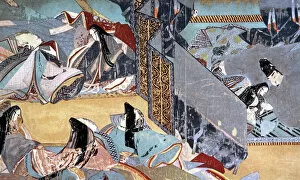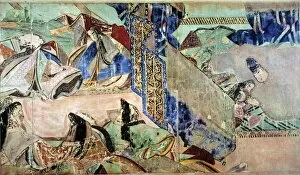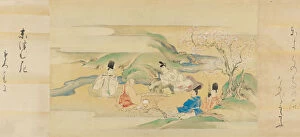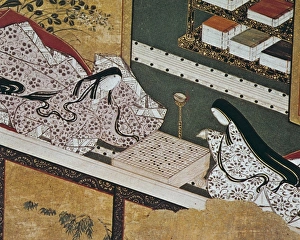Shikibu Collection
Shikibu, a name that resonates with the rich literary history of Japan, and is synonymous with one of the most influential writers in Japanese literature
All Professionally Made to Order for Quick Shipping
Shikibu, a name that resonates with the rich literary history of Japan, and is synonymous with one of the most influential writers in Japanese literature, Murasaki Shikibu. Born around 978 and believed to have lived until 1014 or 1031, she was not only a novelist but also a poet and lady-in-waiting at the Imperial court during the Heian period. Her magnum opus, "The Tale of Genji, " stands as a timeless masterpiece even today. This epic narrative takes us back to ancient Japan, where we witness the intricate lives of its characters. One such character is Niou-no-miya, depicted alongside Prince Genji's sixth daughter in an exquisite scroll painting from the Heian period. The legacy of Murasaki Shikibu extends beyond her renowned novel. Artists throughout centuries have been captivated by her work and have sought inspiration from it. The Genji Monogatari Emaki beautifully illustrates scenes from her tale in vivid colors and meticulous detail. In another artistic tribute, Shikibu Terutada created "Birds and Flowers of Summer and Autumn" during the mid-16th century. This stunning artwork showcases his mastery over brushwork while paying homage to Lady Murasaki's profound influence on Japanese culture. Even Tawaraya Sotatsu couldn't resist capturing Prince Genji's elegance in his carriage through his artistry during the 17th century. His depiction transports us into this enchanting world crafted by Murasaki Shikibu's words. Lady Murasaki herself has become an iconic figure represented in various forms throughout history. In Gakutei's "Four Friends of Calligraphy, " she stands proudly among other esteemed calligraphers—a testament to her enduring impact on Japanese literature. Hiroshige Ando immortalized a scene from "The Tale of Genji" through woodcutting techniques in c1852.


















